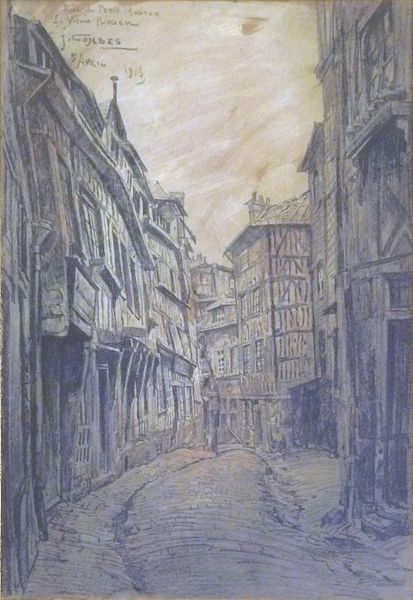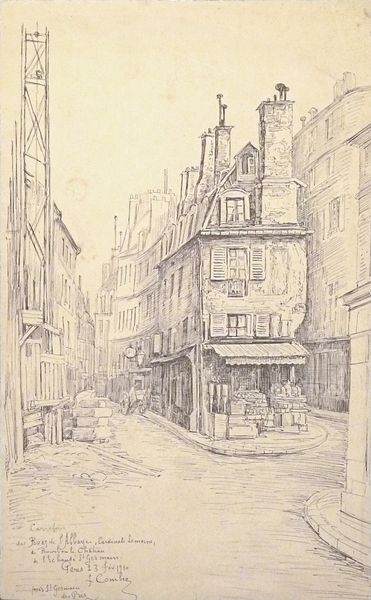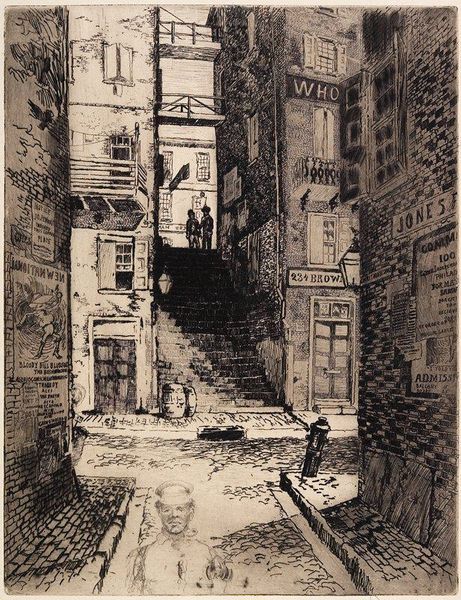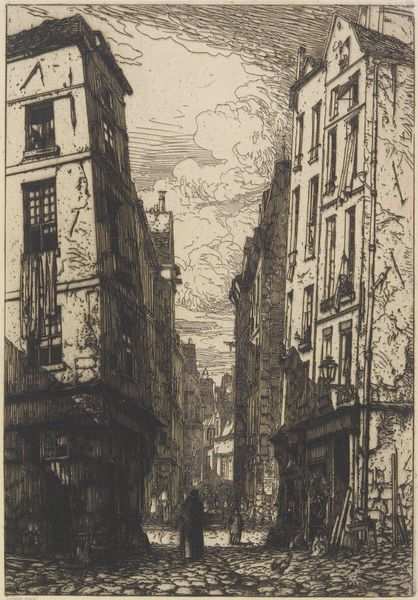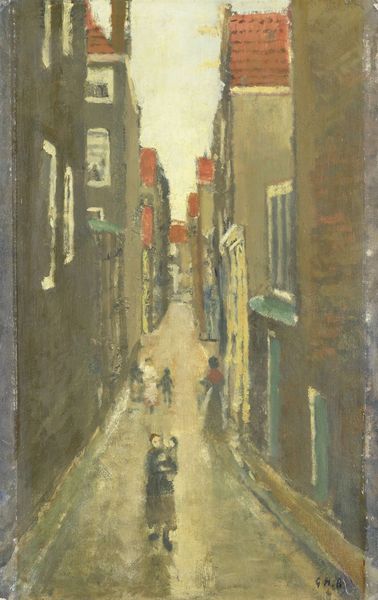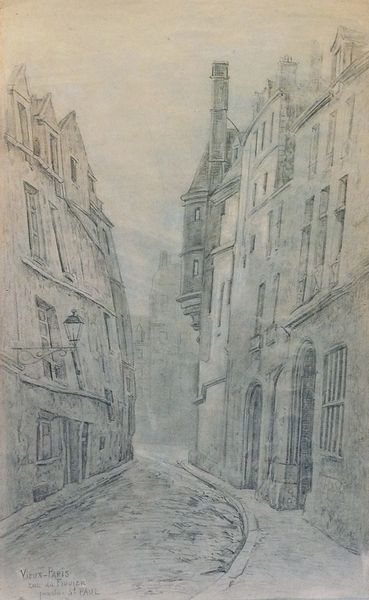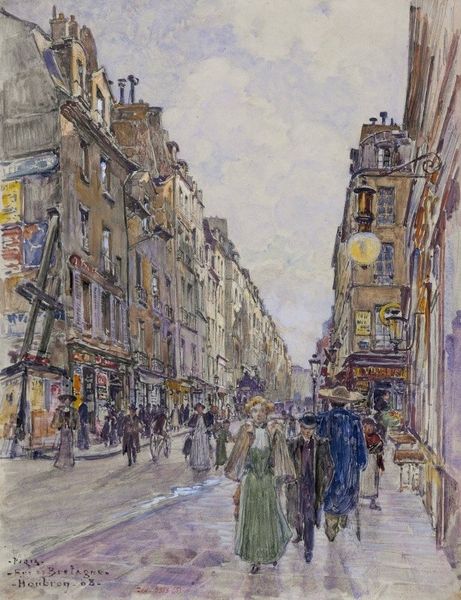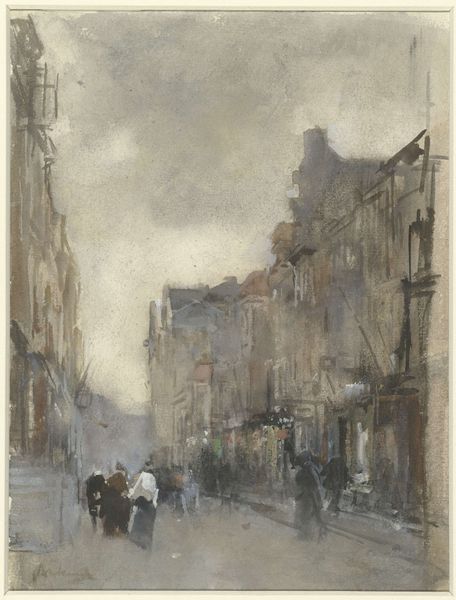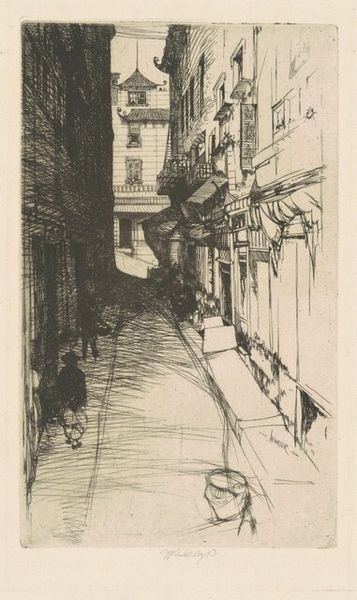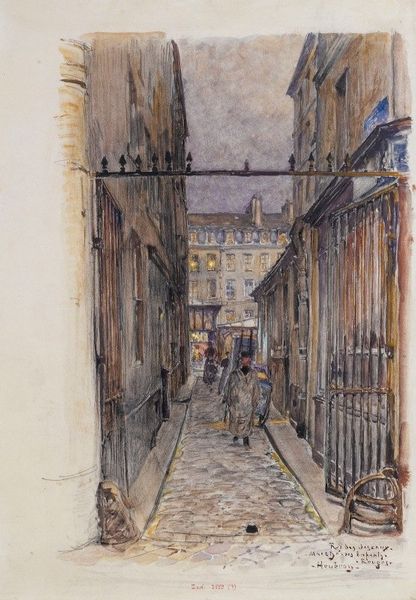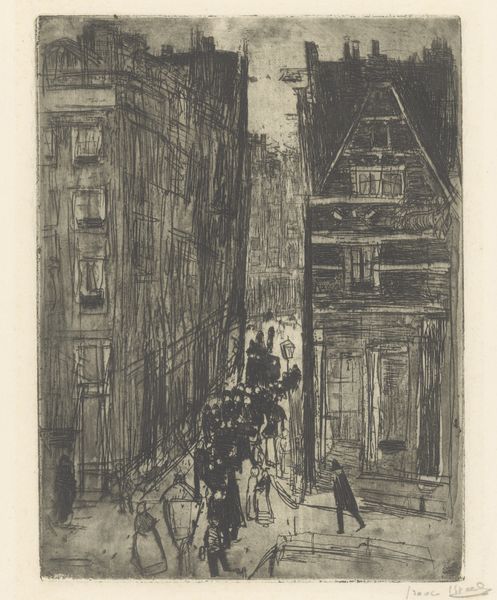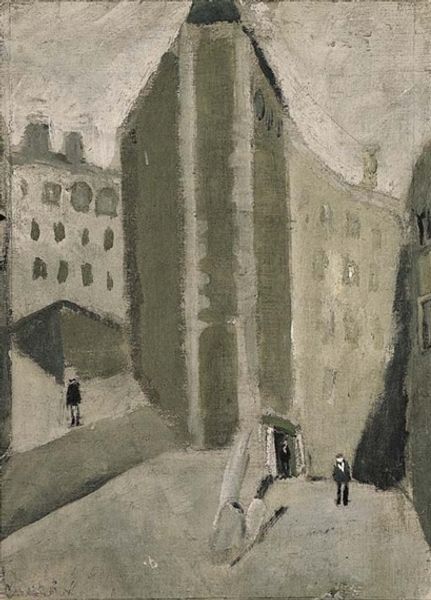
Dimensions: 57 x 34 cm
Copyright: Public domain
Curator: This pencil sketch from 1910 by Fernand Combes depicts a street scene titled "Vieux Paris, Quartier St. Victor, La Rue Des Boulangers." Editor: It’s immediately evocative, isn't it? There’s a kind of stark beauty in its subdued tones and that almost lonely upward perspective of the street. Curator: Absolutely. Combes captured a moment in time, revealing not just the buildings themselves, but the atmosphere of that Parisian neighborhood. The use of pencil lends a certain rawness. Looking closely, we see how Combes emphasizes the architectural density of early 20th-century Paris and invites reflection on urbanization’s impact. Editor: Right, and it's also worth considering how this depiction might have reflected broader socio-political issues in pre-war Europe. Cities, then as now, were sites of intense class division and inequality. This relatively sparse street scene hints at that tension. What do we read into the artist's choice not to capture a crowd bustling, only some ghostly-like figures further in the distance? Was this meant as commentary or to simply evoke the past, its textures and built environment? Curator: That’s an excellent question. Certainly the “Cityscape” theme, a very traditional art theme, was utilized as propaganda or in commercial productions promoting idealized views of urban life. Alternatively, these themes might express concerns about progress. Fernand Combes situates himself within a network of urban representation—both in his specific aesthetic choices, but also the historical context of exhibiting cityscape artworks, which creates a tension here between romantic representation and social reality. Editor: Yes, and it pushes us to interrogate the politics embedded within this street corner and challenge assumptions of Paris being a global center. The drawing also gives me pause to think of housing crises today or the plight of undocumented migrants lacking protection. Looking at older imagery through the present unveils important considerations when we reframe the past and its possible connections to current challenges. Curator: I agree. Looking at this artwork has allowed us to contextualize art's position within cultural shifts. Thanks to it, the Parisian street scene we witness on view is no longer a singular viewpoint but a dialogue about urban life through multiple lenses. Editor: A fitting reminder that art serves not just as aesthetic contemplation, but a provocation to reimagine what it means to build communities for all.
Comments
No comments
Be the first to comment and join the conversation on the ultimate creative platform.
